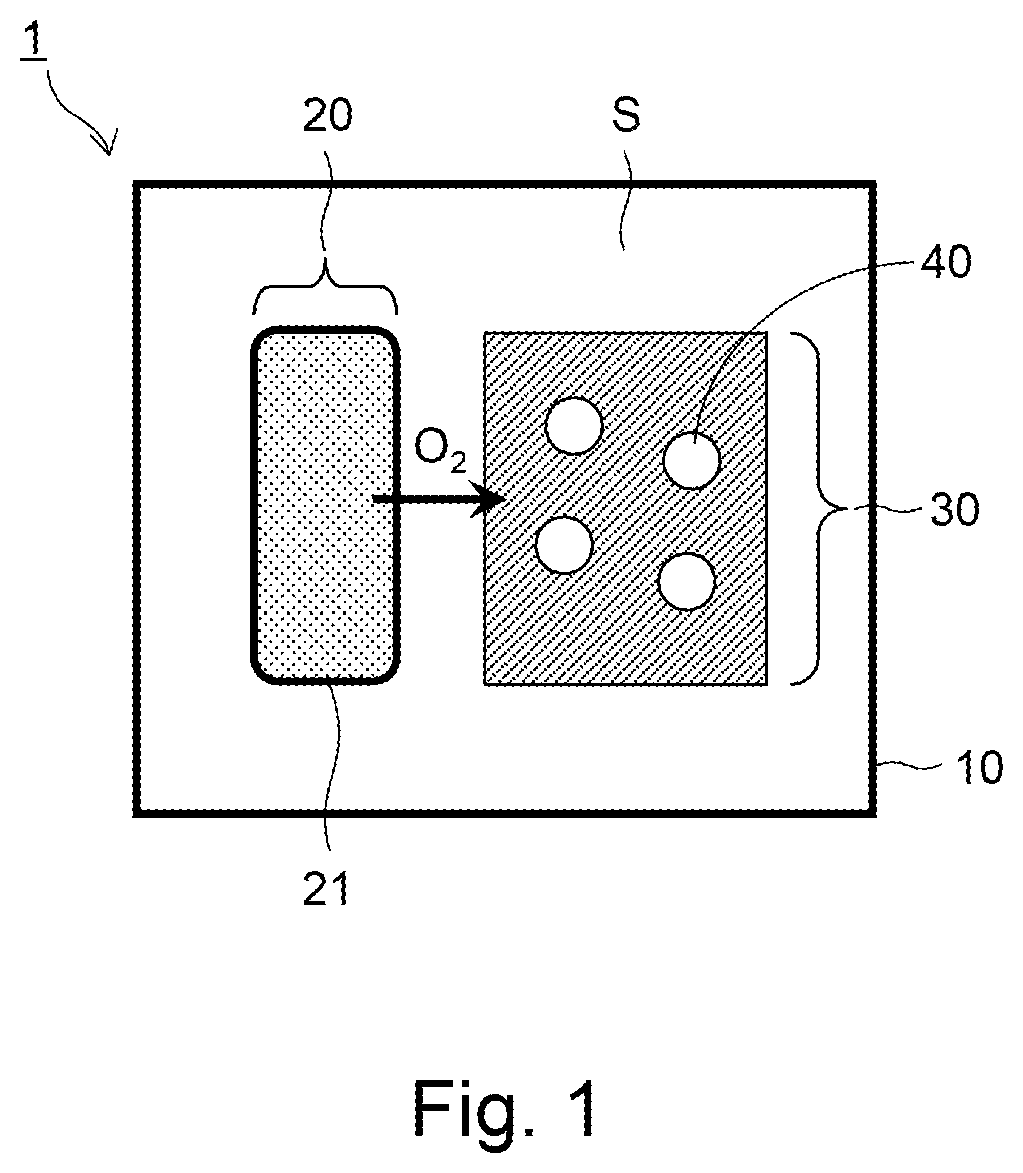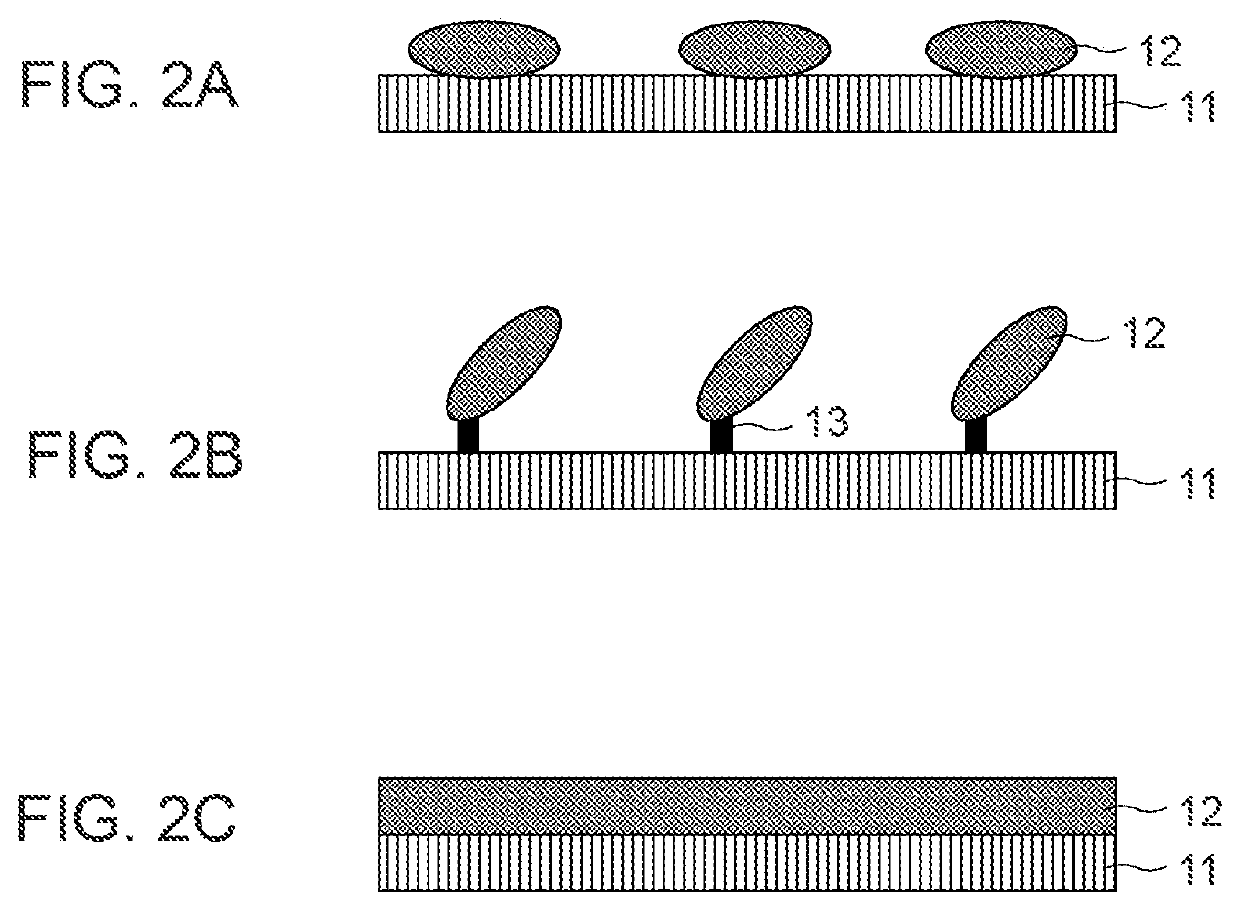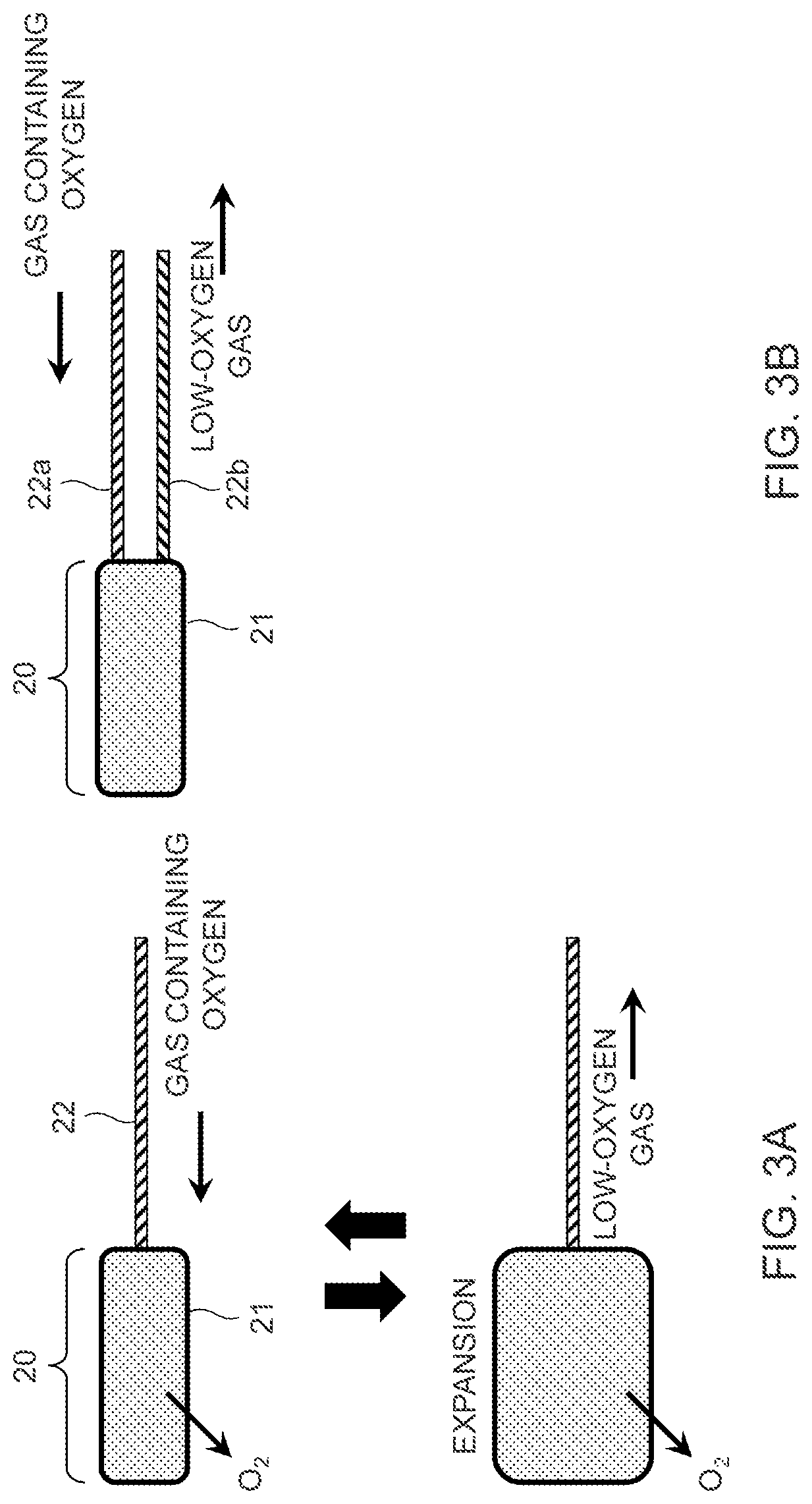Immunoisolation device
a technology of immunonuclear cells and membranes, which is applied in the field of immunonuclear cells, can solve the problems of low cell fixation rate, cancer risk, and suppress the attack of therapeutic cells by immune cells, so as to improve cell viability, uniformize the expression of cellular functions, and suppress fibrosis
- Summary
- Abstract
- Description
- Claims
- Application Information
AI Technical Summary
Benefits of technology
Problems solved by technology
Method used
Image
Examples
example 1
[0051]An immunoisolation device including a porous PTFE membrane including Tween 80 coating as a hydrophilic layer as an immunoisolation membrane, a cellulose nonwoven fabric as the three-dimensional cell support, and a PDMS tube filled with gaseous oxygen as the oxygen supply mechanism, and tightly enclosing a three-dimensional cell support and an oxygen supply mechanism was produced using Hydrofit (registered trademark) as a biocompatible adhesive.
[0052]Specifically, the PDMS tube wrapped with the cellulose nonwoven fabric was placed on the immunoisolation membrane, and the sides of the immunoisolation membrane were adhered using Hydrofit (registered trademark), so that the immunoisolation device in which the three-dimensional cell support and the oxygen supply mechanism were tightly enclosed inside was obtained.
example 2
[0053]An immunoisolation device including a porous PTFE membrane provided with a hydrophilic layer of PMEA graft as an immunoisolation membrane, a PDMS porous body on a thin plate coated with collagen as the three-dimensional cell support, and a PDMS bag capable of changing its volume by supplying air from the outside as the oxygen supply mechanism, and tightly enclosing a three-dimensional cell support and an oxygen supply mechanism was produced using SIBS as a biocompatible adhesive.
[0054]First, after forming a hydrophilic layer of PMEA graft on an immunoisolation membrane formed in a back shape by adhesion using SIBS, a PDMS porous body integrated with a PDMS bag was introduced, and finally, opening of the back-like immunoisolation membrane was folded and physically sealed, thereby obtaining an immunoisolation device in which the three-dimensional cell support and the oxygen supply mechanism were tightly enclosed inside.
example 3
[0055]An immunoisolation device including a porous PTFE membrane provided with a hydrophilic layer consisting of a laminate of a polymethacrylic acid-polymethacrylate copolymer fiber sheet as an immunoisolation membrane, cross-linked gelatin beads as the three-dimensional cell support, and a PDMS bag capable of changing its volume by supplying air from the outside as the oxygen supply mechanism, and tightly enclosing a three-dimensional cell support and an oxygen supply mechanism was produced using SIBS as a biocompatible adhesive.
[0056]First, an immunoisolation membrane laminated with a polymethacrylic acid-polymethacrylate copolymer fiber sheet was formed into a bag shape by adhesion using SIBS, and the crosslinked gelatin beads held in a net-like bag and a PDMS bag were introduced therein, and finally, opening of the back-like immunoisolation membrane was folded and physically sealed, so that an immunoisolation device in which the three-dimensional cell support and the oxygen sup...
PUM
| Property | Measurement | Unit |
|---|---|---|
| pore diameter | aaaaa | aaaaa |
| pore diameter | aaaaa | aaaaa |
| thickness | aaaaa | aaaaa |
Abstract
Description
Claims
Application Information
 Login to View More
Login to View More - R&D
- Intellectual Property
- Life Sciences
- Materials
- Tech Scout
- Unparalleled Data Quality
- Higher Quality Content
- 60% Fewer Hallucinations
Browse by: Latest US Patents, China's latest patents, Technical Efficacy Thesaurus, Application Domain, Technology Topic, Popular Technical Reports.
© 2025 PatSnap. All rights reserved.Legal|Privacy policy|Modern Slavery Act Transparency Statement|Sitemap|About US| Contact US: help@patsnap.com



